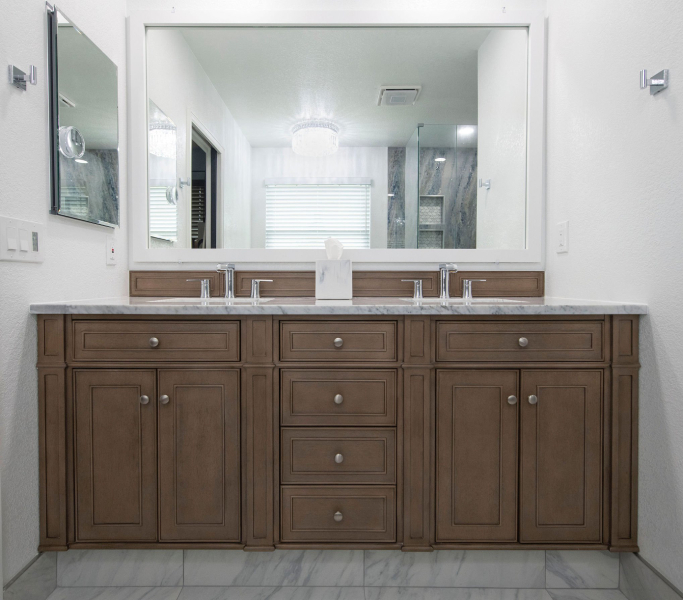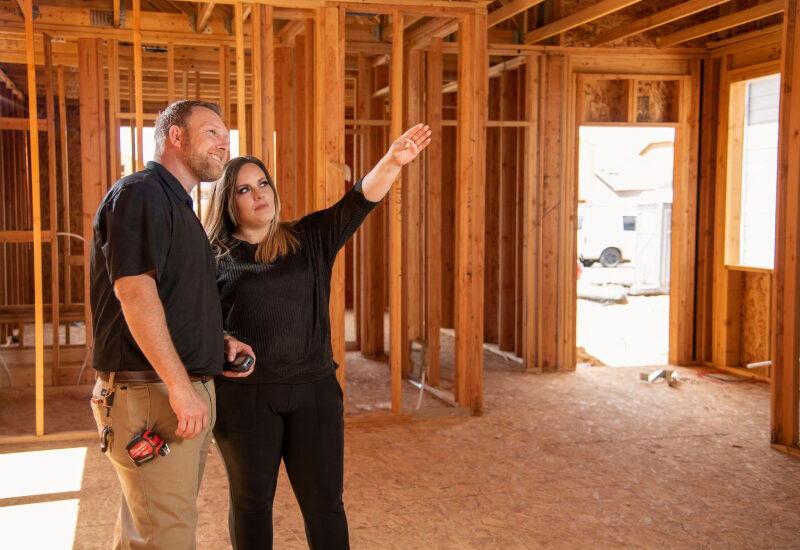In today’s fast-paced and competitive business landscape, efficiency and effectiveness are key factors in the success of any project. To streamline the process and ensure optimal results, many organizations are turning to design-build services. Design-build is an integrated approach that combines the expertise of architects, engineers, and construction professionals into a single team, working collaboratively from the project’s inception to its completion. By eliminating the traditional sequential process of design-bid-build, design-build services offer numerous advantages, including streamlined communication, accelerated timelines, and cost savings. This introductory paragraph will explore the benefits of design-build services and how they can revolutionize your project management, enabling you to achieve your goals with greater efficiency and effectiveness.
Introduction To Design-Build Services
Design-build services have revolutionized project management by integrating the design and construction phases into a streamlined and collaborative process. This approach, under a single contract, eliminates the traditional sequential delivery method, resulting in improved efficiency and reduced risks. With design and construction teams working together from the start, communication is enhanced, and potential conflicts are resolved promptly. The advantages of design-build services extend beyond cost and time savings; they also foster innovation and value engineering. By involving construction expertise during the design phase, projects can be optimized for functionality and cost-effectiveness. Design-build services enable faster project delivery by allowing construction activities to commence concurrently with the final design stages. This introduction to design-build services sets the stage for exploring its numerous benefits in streamlining projects.
Benefits Of Design-Build Services For Streamlining Projects
Design-build services offer a range of benefits that contribute to the efficient execution of projects. By integrating design and construction expertise, collaboration is enhanced, resulting in better coordination and problem-solving. The streamlined approach eliminates the need for multiple contracts, reducing administrative tasks and potential communication gaps. Design-build services promote innovation and value engineering by leveraging the construction team’s input during the design phase, leading to cost savings and improved project outcomes. With concurrent design and construction activities, project timelines can be significantly reduced, resulting in faster project delivery. Additionally, the single-point responsibility of the design-build entity simplifies project management and mitigates risks. These benefits make design-build services an attractive option for streamlining projects and achieving successful outcomes.
The Design-Build Process: A Comprehensive Overview
The design-build process encompasses a series of well-defined stages that facilitate the integration of design and construction. It begins with the selection of a qualified design-build team based on expertise, experience, and previous project success. The team collaboratively develops a project concept and initiates the design phase, which involves close collaboration between architects, engineers, and other specialists. Unlike traditional project delivery methods, design-build services encourage ongoing communication and coordination among stakeholders throughout the process. The concurrent design and construction activities enable faster project execution, as the construction phase begins while the design is still being finalized. This overlapping approach minimizes potential delays and ensures a seamless transition from design to construction. The design-build team maintains transparent communication channels, enabling real-time problem-solving and decision-making. The final project is delivered to the owner, often with ongoing maintenance and support options available.
Choosing The Right Design-Build Firm For Your Project
Selecting the ideal design-build firm is crucial for the success and efficiency of your project. To make an informed decision, evaluate the firm’s expertise, experience, and track record. Review their portfolio to ensure they have relevant experience in projects similar to yours. Assess their project management capabilities, communication skills, and collaborative approach. Seek feedback from previous clients to gauge their satisfaction with the firm’s performance. It’s important to ensure the design-build firm aligns with your project’s budget, timeline, and specific requirements. Verify their licenses, certifications, and insurance coverage. By conducting a thorough evaluation, you can confidently choose a design-build firm that will streamline your project and deliver exceptional results.
Key Roles And Responsibilities In Design-Build Services
Design-build services involve several key roles and responsibilities that contribute to the efficient execution of a project. The design-build firm assumes the primary role, managing the project from start to finish. They coordinate the design process, working closely with architects, engineers, and other professionals to create a cohesive design that meets the project objectives. The construction team, led by project managers and skilled tradespeople, plays a vital role in executing the design and ensuring timely construction. The project owner’s active involvement is essential in providing input, making decisions, and communicating expectations. Specialty consultants, such as structural or environmental engineers, may also be involved to address specific project requirements. Effective collaboration and clear delineation of roles among these stakeholders are crucial for streamlining the project and achieving successful outcomes.
Enhancing Collaboration And Communication With Design-Build Services
Design-build services foster collaboration and communication among project stakeholders to maximize efficiency. By bringing together designers, builders, and owners in a collaborative environment, design-build services facilitate the exchange of ideas, knowledge, and expertise. Regular meetings and open lines of communication allow all parties to contribute, address concerns, and align their visions for the project. Design-build firms leverage advanced communication tools to streamline information sharing and decision-making processes. These tools enable real-time collaboration, document sharing, and issue tracking, promoting transparency and accountability among team members. Design-build services also emphasize early involvement of the construction team in the design phase, enabling valuable insights and constructability reviews. By enhancing collaboration and communication, design-build services create a cohesive project team, leading to streamlined processes, reduced errors, and improved project outcomes.
Streamlining Project Delivery With Design-Build Services
Design-build services offer significant advantages in streamlining project delivery compared to traditional methods. By integrating design and construction, design-build services eliminate the time-consuming process of bid solicitation and evaluation, reducing delays and conflicts. Concurrent design and construction activities accelerate project delivery, as construction can commence while the design is still being finalized. Design-build services also promote value engineering, ensuring the design aligns with budgetary constraints. The collaborative nature of design-build fosters efficient decision-making and issue resolution, minimizing downtime and enhancing overall project efficiency. With these streamlined project delivery benefits, design-build services have become a preferred approach across a wide range of industries.
Case Studies: Successful Implementation Of Design-Build Services
Examining case studies of successful projects that have utilized design-build services provides valuable insights into the effectiveness of this approach. These case studies demonstrate how design-build can streamline project delivery and achieve exceptional outcomes. They showcase successful collaborations between architects, engineers, contractors, and owners, emphasizing the benefits of early involvement and ongoing communication. Case studies often highlight accelerated project schedules, cost savings, improved functionality, and sustainability achieved through the design-build process. Analyzing these real-world examples allows project owners and stakeholders to gain a deeper understanding of the potential benefits and outcomes achievable through design-build services. Case studies also serve as a reference point for best practices and lessons learned, offering guidance for future projects.
Best Practices For Maximizing Efficiency With Design-Build Services
To maximize efficiency when utilizing design-build services, following best practices throughout the project lifecycle is crucial. Early involvement of the design-build team helps align project goals, scope, and budget from the beginning, facilitating effective planning and minimizing redesigns. Clear and transparent communication among all stakeholders ensures a shared understanding of project requirements and expectations. Regular project meetings, progress updates, and timely issue resolution contribute to streamlined decision-making and effective problem-solving. Establishing clear performance metrics and project milestones allows for progress monitoring and accountability. Collaboration and teamwork should be fostered, creating an environment that encourages innovative solutions and leverages the expertise of all team members. Continuous evaluation and feedback loops enable ongoing improvement, ensuring project outcomes are consistently streamlined and successful.
Conclusion
Design-build services foster early and ongoing collaboration between designers and builders, allowing for innovative solutions, cost-saving measures, and value engineering. The close partnership between the design and construction teams facilitates real-time problem-solving and the incorporation of practical expertise into the design process. As a result, the final project reflects both the vision of the client and the practical considerations of the builders, leading to a more efficient and functional end result. Another significant advantage of design-build services is the potential for accelerated project timelines. With the design and construction processes overlapping, project delivery can be expedited, reducing overall project duration. Additionally, design-build minimizes change orders and design discrepancies that can cause delays and cost overruns in traditional project delivery methods. By addressing issues proactively and involving all stakeholders early on, design-build helps streamline the construction process and mitigate potential risks.

Hi, my name is Kevin Moore. I was born in San Diego, CA and studied at the University of San Diego. I am passionate about sharing my knowledge with interested people and have years of experience in the field of business, health . information technology.











